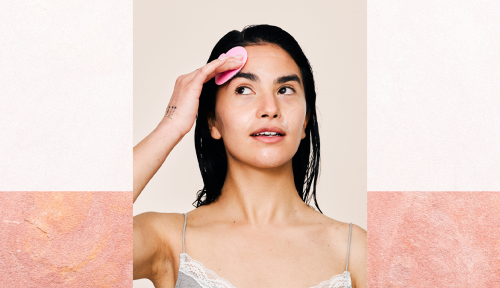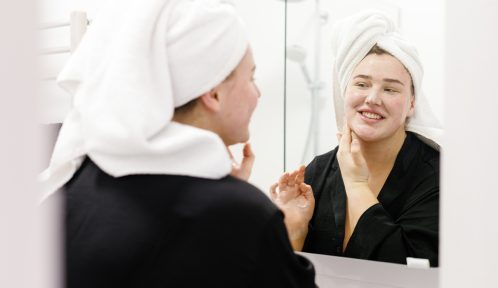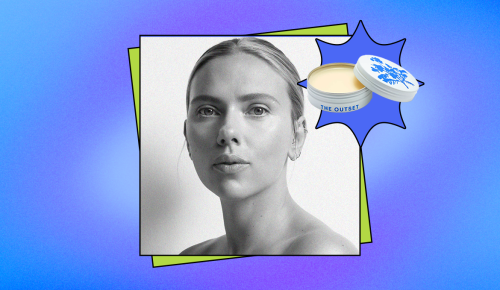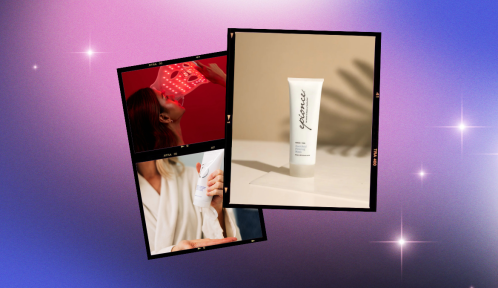Our editors independently select these products. Making a purchase through our links may earn Well+Good a commission
Skin Dysmorphia Is a Very Real Mental Health Concern
Experts say more folks are experiencing a form of body dysmorphic disorder focused on skin (or "skin dysmorphia") following the pandemic.


Skin Dysmorphia Is a Very Real Mental Health Concern
And thanks to rising rates of stress and social media use, it’s on the rise.
Experts in This Article
London-based psychodermatologist
psychiatrist and body dysmorphic disorder expert
dermatologist, psychiatrist, and director of the Wisconsin Psychocutaneous Clinic
As an 11-year-old sixth-grader in the early aughts, Danielle Kent, now a publicist based in Los Angeles, began fixating on her skin. She would carry a makeup bag with her at all times to “fix” her perceived flaws at any given moment.
“I would be doing touch-ups during class or running to the bathroom between periods to make sure I looked okay,” she says. “I thought that if I wasn't checking in and seeing what I looked like between these class periods, then somehow my face would completely distort and look different from how I wanted it to look.”
As she got older, she began waking up at 6 a.m. so she could spend hours getting ready for school. Still, she’d dip into the bathroom several times a day to make sure she continued to look okay—and she took care to hide this habit from her peers.
“I didn't feel comfortable talking to other people about what I was going through because when you're constantly looking at yourself, people perceive that as vanity,” she says. “People would think I was looking in the mirror all day because I thought I was hot s**t, but in reality, I was just checking to make sure I didn’t look different [than I had before].”
But Kent wasn’t being vain or self-conscious—she was dealing with skin dysmorphia. And now, with the modern omnipresence of social media apps and recent proliferation of video conferencing, experts believe the condition has become even more prevalent. London-based psychodermatologistAlia Ahmed, MD, says, “I am absolutely seeing a rise in cases.”

What is skin dysmorphia?
First and foremost, it’s important to understand that “skin dysmorphia” is a colloquial term, not a clinical diagnosis; the psychiatric term for it isbody dysmorphic disorder(BDD).
This Parisian Skincare Brand Is Launching in the United States for the First Time—Here’s What a Derm Wants You to Know

We’re Calling It: Cleansing Balms Are the Face Wash of the Future—Here Are 3 to Add to Your Cart

This Is the One Product That Scarlett Johansson Always Keeps in Her Purse and on Her Bedside Table

“BDD happens when there is a preoccupation with one or more perceived flaws in physical appearance that are not observed by others or are perceived as very slight by others,” says dermatologist and psychiatristLadan Mostaghimi, MD, director of the Wisconsin Psychocutaneous Clinic. She adds that this preoccupation is most frequently directed toward the skin, hair, and nose, but can also focus on muscles or other areas of the body. BDD involves compulsively obsessing over a perceived flaw, which is either nonexistent or slight in reality, leading to a notable decline in quality of life.
According to psychiatrist and BDD expertKatharine Phillips, MD, BDD affects between2 to 3 percent of the population(though it is likely underreported)—and the majority (around 60 percent) of those impacted identify as women. While BDD can present at any age, Dr. Phillips says that the average age of onset is around 16 or 17.
According to a2022 study publishedin theBritish Journal of Dermatology, symptoms of BDD were five times more prevalent in patients with dermatological conditions. “Thus far, the best studies of the clinical features of body dysmorphic disorder show that73 percent of people with body dysmorphic disorder have skin concerns,” Dr. Phillips says, hypothesizing this may underpin the popularization of the term skin dysmorphia.
Dr. Phillips’ book,The Broken Mirror: Understanding and Treating Body Dysmorphic Disorder, includes research concluding people with skin-centric BDD often obsess over perceived acne and scarring and other types of marks on their face, and also the color of their skin (for example, thinking it’s too red or too white). “But virtually any aspect of the skin can be disliked—facial pores that are considered unusually large, veins, capillaries, wrinkles, sagging, shriveling, and stretch marks,” she says.
While Dr. Phillips says there is no singular cause of BDD, there may be a significant genetic component. In other words, like many other mental health conditions, risk for the disorderis inherited. Environmental factors may also contribute to the development of BDD, but she says identifying those factors and knowing their extent requires additional scientific research. “It may be things like being teased about your appearance, it may be childhood abuse, it may be certain forms of social media—but it’s very hard to study,” she says.
How BDD differs from other body-image concerns
It’s important to distinguish between BDD (skin-focused body dysmorphic disorder or otherwise) and appearance-related insecurities, the latter of which affects far more people than BDD does.
“Most people have body-image concerns, but we don’t want to label 90 percent of the population with a psychiatric disorder,” says Dr. Phillips. “We have to draw a somewhat imperfect, but very important, line between sub-clinical concerns—meaning [a line between] those not warranting a psychiatric diagnosis and the psychiatric diagnosis.”
In addition to a preoccupation with skin quality consuming at least one hour of an individual’s day, cumulatively, it must lead to clinically significant distress or impairment in functioning, as Dr. Mostaghimi noted earlier.







